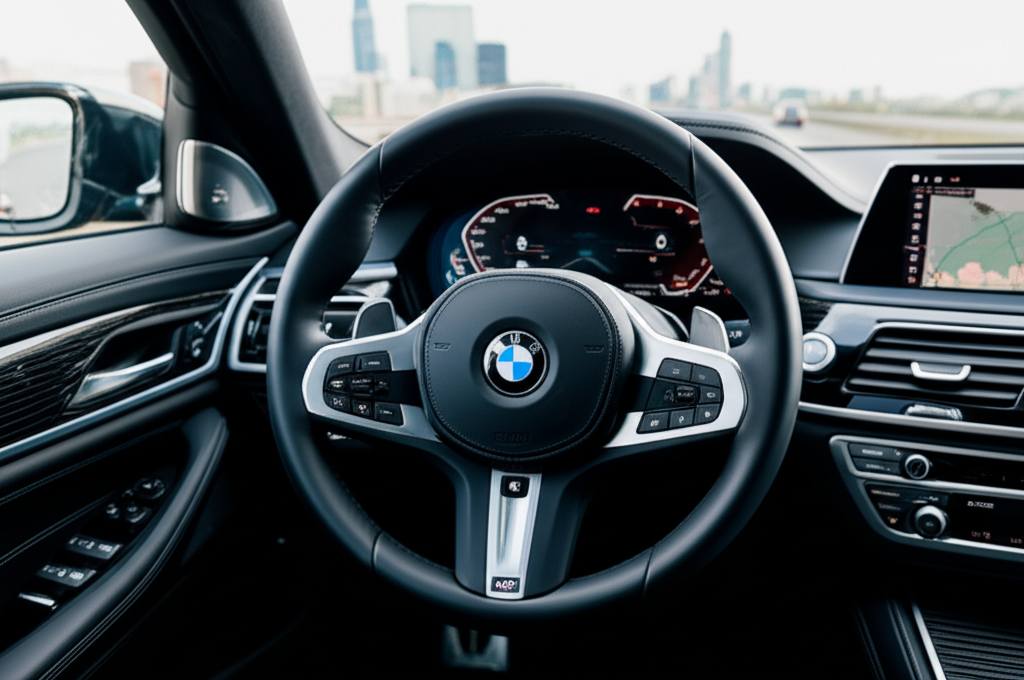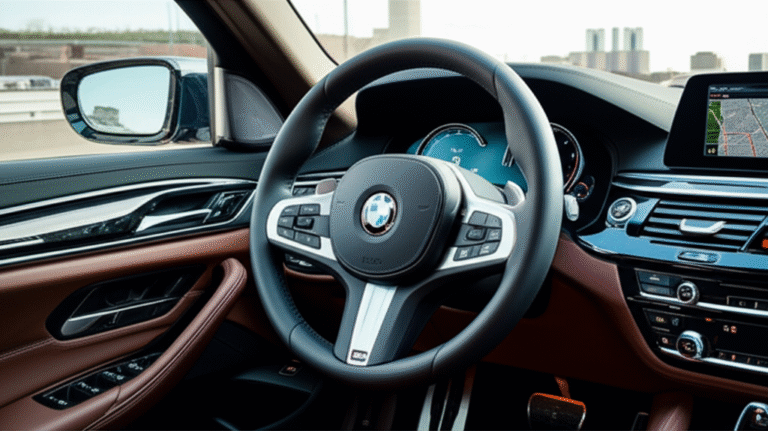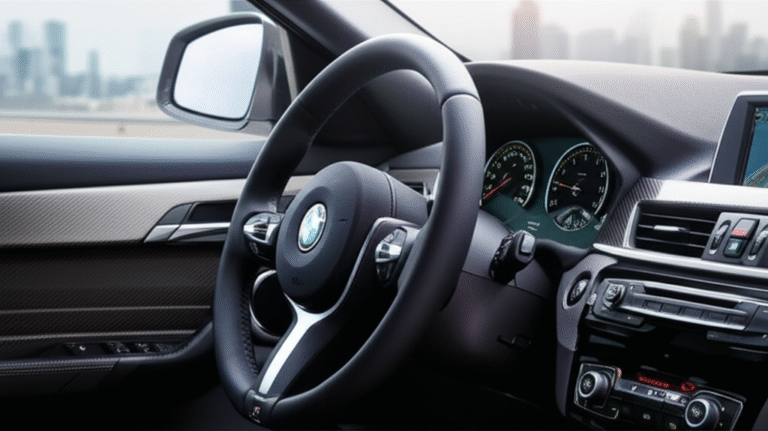BMW Car Old Model: 7 Amazing Facts

Discover 7 Amazing Facts About BMW Car Old Models to Impress Fellow Enthusiasts!
Key Takeaways
- Explore BMW’s pioneering spirit in automotive history.
- Understand the engineering marvels of vintage BMWs.
- Learn about iconic designs that defined eras.
- Appreciate BMW’s motorsport heritage.
- Uncover surprising innovations in older models.
- Recognize the enduring value of classic BMWs.
Unearthing the Charm of BMW Car Old Models: 7 Amazing Facts to Know
Are you fascinated by the enduring allure of older BMWs? These cars aren’t just steel and rubber; they’re rolling pieces of automotive art and engineering. Owning or admiring an older BMW model connects you to a rich legacy of German precision and thrilling performance. But what makes these vintage beauties so special? Many people wonder about the unique stories and technical advancements hidden within these classic machines. This guide will reveal seven amazing facts about BMW car old models, making you an instant expert. Get ready to dive deep into the fascinating world of BMW’s past!
1. The Birth of the Blue and White Propeller: A Brief History
The iconic BMW logo, often mistaken for a propeller, actually has its roots in the Bavarian Free State flag. BMW, which stands for Bayerische Motoren Werke AG (Bavarian Motor Works), was founded in 1916. Initially, BMW manufactured aircraft engines. The blue and white colors represent the Bavarian sky and clouds. While the propeller association became popular in their advertising, the core design is a direct nod to BMW’s home state. This heritage is deeply woven into every BMW Car Old Model, symbolizing a connection to Bavarian excellence.
From Aircraft to Automobiles
The journey from aircraft engines to automobiles is a remarkable one. After World War I, the Treaty of Versailles prohibited Germany from manufacturing aircraft engines. This forced BMW to pivot. They began producing motorcycle engines in 1923, with the R 32 being their first major success. This laid the groundwork for their entry into the automotive world. By 1928, BMW acquired the automotive manufacturer Automobilwerk Eisenach, thus beginning their automotive production. This transition showcases BMW’s adaptability and forward-thinking approach, evident in their early car models.
The Significance of Early BMW Cars
Early BMW cars, like the Dixi 3/15, which was based on a license from Austin, were crucial in establishing the brand’s presence in the automotive market. However, it was the BMW 303 in 1933 that truly showcased BMW’s unique design language, featuring the now-classic “kidney grille.” This grille would become a signature element, evolving over decades yet remaining instantly recognizable. These early models were not just transportation; they were statements of engineering prowess and a bold vision for the future of driving, setting the stage for the legendary BMW Car Old Model lineup we admire today.
2. The “Ultimate Driving Machine” Legacy: Engineering Prowess
The slogan “The Ultimate Driving Machine” isn’t just marketing jargon; it’s a philosophy deeply embedded in BMW’s DNA. From its inception, BMW has prioritized driver engagement and superior handling. This focus is particularly noticeable in their older models, where mechanical feedback and a direct connection to the road were paramount. Many BMW Car Old Model enthusiasts will attest that these vehicles offer a driving experience that modern cars, with all their electronic aids, simply cannot replicate.
Suspension and Handling Innovations
BMW was an early adopter of independent front suspension, which significantly improved ride comfort and handling compared to solid axles used by many competitors. Models like the BMW 507, though produced in limited numbers, were testaments to this engineering. Later, iconic series like the E30 3 Series (1982-1994) became legendary for their near-perfect weight distribution (50/50 front/rear) and sophisticated multi-link rear suspension. This combination of advanced suspension technology and balanced weight distribution is a hallmark of what makes a BMW Car Old Model so exhilarating to drive.
Engine Technology Milestones
BMW’s reputation for exceptional engines is well-earned. They were pioneers in developing and refining inline-six engines, known for their smoothness and power delivery. The M30 engine, introduced in the late 1960s, was a workhorse that powered many BMWs for decades, including models like the E9 coupes and early 7 Series sedans. BMW also introduced early forms of electronic fuel injection and variable valve timing, pushing the boundaries of performance and efficiency even in older models. These innovations ensured that a BMW Car Old Model offered a potent and refined powertrain that set it apart from the crowd.
3. Iconic Designs That Defined Eras: The Art of BMW Styling
BMW’s design language has always been evolutionary rather than revolutionary, a trait that contributes to the timeless appeal of their older models. While modern BMWs might feature more aggressive lines, the fundamental principles of proportion, stance, and key design cues have remained consistent, making even a BMW Car Old Model instantly recognizable as a BMW. These designs weren’t just about aesthetics; they were functional, contributing to aerodynamics and driver visibility.
The Kidney Grille: A Timeless Signature
As mentioned earlier, the kidney grille first appeared on the BMW 303 in 1933. This distinctive feature, designed to house the radiator, has been a central element of BMW design for over 90 years. It has been adapted, enlarged, and reshaped across generations and models, but its core identity persists. Whether it’s the relatively slim grille of a 1960s BMW 2002 or the more pronounced version on a late 1980s E30, the kidney grille is an undeniable signifier of BMW heritage, a key part of the charm of any BMW Car Old Model.
The Hofmeister Kink: A Subtle but Significant Detail
Another subtle yet defining design element is the “Hofmeister Kink,” a forward bend or kick in the C-pillar’s lower trim. Named after Wilhelm Hofmeister, who introduced it in the 1960s, this kink adds visual dynamism to the rear of the car. It subtly directs the eye towards the rear wheels, emphasizing the car’s rear-wheel-drive character and creating a sense of forward motion even when stationary. This detail, present on almost all BMWs since its introduction, is a small but critical component of the overall aesthetic that makes a BMW Car Old Model so elegantly proportioned.
Notable BMW Car Old Models and Their Design Impact
Several BMW Car Old Model vehicles have left an indelible mark on automotive design history:
| Model | Production Years | Design Significance |
|---|---|---|
| BMW 507 | 1956–1959 | A stunning, curvaceous roadster considered one of the most beautiful BMWs ever made. Showcased elegance and sportiness. |
| BMW 2002 | 1968–1976 | A compact, sporty sedan that defined the “Ultimate Driving Machine” concept for many. Its clean, functional design was highly influential. |
| BMW E9 | 1968–1976 | Elegant coupes like the 3.0 CS and 3.0 CSi, known for their sleek lines and luxurious interiors, representing a high point in BMW grand touring design. |
| BMW E30 3 Series | 1982–1994 | A benchmark for compact sports sedans, with a timeless design that remains popular and sought after by enthusiasts. Its balanced proportions are iconic. |
| BMW E34 5 Series | 1987–1996 | A sophisticated executive car that blended performance with luxury. Its understated yet commanding presence set a new standard. |
4. Motorsport Heritage: From Nürburgring to the Street
BMW’s involvement in motorsport is legendary, and this racing DNA has consistently filtered down into their production cars, especially the older models. The desire to win on the track fueled engineering advancements that directly benefited the everyday driver, making a BMW Car Old Model a potent performer even off the race circuit.
The Birth of M Power
BMW M GmbH was established in 1972 to accelerate BMW’s high-performance division. The initial goal was to support BMW’s racing program. However, it soon began producing enthusiast-focused versions of production cars. The first M car was the legendary M1, a mid-engined supercar. Following that, iconic models like the E24 M635CSi, E30 M3, and E34 M5 brought motorsport-derived technology and performance to the road. These cars are highly coveted today, representing the pinnacle of what a BMW Car Old Model could achieve in terms of raw performance and driving dynamics.
Racing Successes and Their Impact
BMW has a rich history of success in various forms of motorsport, including Formula 1, touring car championships (like DTM), and endurance racing. Victories at legendary circuits such as the Nürburgring and Spa-Francorchamps weren’t just trophies; they were proving grounds for new technologies. Innovations in engine management, aerodynamics, and suspension tuning developed for racing often found their way into production models. This direct link between the track and the street is a significant part of the appeal of a BMW Car Old Model, offering a tangible connection to BMW’s winning heritage.
For a deeper dive into BMW’s racing history, explore resources from official motorsport organizations or reputable automotive history sites.
5. Surprising Innovations and Technologies
While we often associate advanced technology with modern cars, BMW has a long history of introducing groundbreaking innovations, even in their older models. Many features that are standard today were considered cutting-edge when they first appeared on a BMW Car Old Model.
Early forays into Electronics and Safety
BMW was an early adopter of anti-lock braking systems (ABS) on production cars, making it available on models like the 7 Series in the early 1980s. They also pioneered early forms of electronic engine management and traction control. The introduction of airbags, while not exclusively a BMW innovation, was integrated thoughtfully into their vehicle designs. These advancements weren’t just about comfort; they significantly enhanced vehicle safety, reflecting BMW’s commitment to protecting its drivers. This forward-thinking approach ensures that even a BMW Car Old Model often possesses a surprising level of sophistication for its era.
Unique Features and Driver Aids
Beyond safety, older BMWs featured unique innovations aimed at enhancing the driving experience. For instance, the “check control” system introduced in the 1980s provided drivers with diagnostic information about various vehicle functions through dashboard lights and chimes. Climate control systems became increasingly sophisticated, offering precise temperature regulation. Some high-end models even offered features like power-adjustable steering columns with memory functions. These details might seem common now, but they represented significant technological leaps for a BMW Car Old Model, offering a premium experience decades ago.
Pro Tip: When considering a BMW Car Old Model, researching its specific technological features and their operational status is crucial. Older electronics can sometimes be temperamental.
6. The Enduring Value and Collectibility
Many BMW Car Old Models have transitioned from being daily drivers to highly sought-after collector’s items. Their combination of style, performance, and engineering ensures that certain models retain, and often increase, their value over time. Understanding what makes them collectible can be enlightening for enthusiasts and potential buyers alike.
What Makes Them Desirable?
Several factors contribute to the collectibility of older BMWs:
- Rarity: Limited production runs, especially for M models or special editions, significantly increase desirability.
- Design: Timeless styling that doesn’t age poorly.
- Driving Experience: The raw, engaging feel that enthusiasts crave.
- Engineering: Robust construction and often, well-engineered powertrains that can last with proper care.
- Motorsport Pedigree: Models with a racing history or direct lineage to racing cars often command higher prices.
Popular Collectible BMW Car Old Models
Some BMW Car Old Model vehicles that are particularly popular among collectors include:
| Iconic Model | Why It’s Collectible |
|---|---|
| E30 M3 | Legendary performance, unique homologation special, raw driving feel. |
| E9 CS/CSi Coupes | Beautiful design, sophisticated engineering, elegant grand tourers. |
| E24 6 Series (especially M635CSi/M6) | Sleek “shark nose” design, powerful engines, luxurious coupes. |
| E28 M5 | The original “super sedan,” powerful and understated. |
| BMW 2002tii/Turbo | Pioneering compact sport sedan, historically significant. |
| BMW Z3 M Coupe/Roadster | Quirky styling, potent M performance, unique character. |
The market for classic cars is dynamic, and research is always recommended. For insights into classic car market trends and valuations, consider reputable automotive appraisal services or classic car auction results.
7. The Passionate Community of Owners
Perhaps one of the most amazing aspects of BMW Car Old Model ownership is the vibrant and passionate community that surrounds them. These aren’t just cars; they are often part of a lifestyle for their owners, who dedicate time to preserving, restoring, and celebrating these automotive icons.
Car Clubs and Online Forums
Across the USA and globally, BMW car clubs and online forums thrive. These platforms are invaluable resources for owners looking for advice on maintenance, restoration tips, parts sourcing, and even finding other enthusiasts. Events organized by these clubs range from casual meetups and scenic drives to concours d’elegance and track days. Engaging with these communities offers a wealth of knowledge and a shared sense of camaraderie that enhances the ownership experience of a BMW Car Old Model.
Restoration and Maintenance
Restoring a BMW Car Old Model can be a labor of love. Many owners take immense pride in bringing a vintage BMW back to its former glory, often undertaking significant mechanical and cosmetic work. While some parts can be challenging to find, the dedicated aftermarket and a strong community network often provide solutions. Understanding the nuances of maintaining an older vehicle is key. Resources like the official BMW website and specialized BMW repair shops can provide guidance on proper care and maintenance, ensuring that these classic machines continue to perform and impress.
The Joy of Ownership
The true magic of a BMW Car Old Model lies in the driving experience and the connection it fosters. It’s about appreciating the engineering, the design, and the history. It’s about the sound of a finely tuned engine, the feel of the road through the steering wheel, and the admiring glances from fellow car enthusiasts. This passion is what keeps the legacy of BMW’s older models alive and celebrated.
Frequently Asked Questions (FAQ) about BMW Car Old Models
Q1: Are older BMW models reliable for daily driving?
A1: While many older BMWs are robust, their reliability for daily driving depends heavily on maintenance history, mileage, and specific model. Well-maintained examples can be reliable, but they generally require more attention than a modern car and may not meet current emissions standards in all states. It’s advisable to have a pre-purchase inspection by a BMW specialist.
Q2: Where can I find parts for a BMW Car Old Model?
A2: Parts can be found through BMW dealerships for some newer “old” models, specialized classic BMW parts suppliers, online marketplaces like eBay, and through BMW owner clubs and forums where members often share leads or sell used parts.
Q3: What are the common issues to look out for when buying a classic BMW?
A3: Common issues vary by model but can include rust (especially around wheel arches, rocker panels, and sunroofs), cooling system failures (radiator, hoses, water pump), aging electrical components, worn suspension bushings, and engine seal leaks. For M models, specific drivetrain and engine wear are critical checks.
Q4: How do I find a good mechanic for an older BMW?
A4: Look for independent European car repair shops specializing in BMWs or those with a strong reputation for working on older vehicles. BMW Car Old Model owners’ forums are excellent places to get recommendations for trusted mechanics in your area.
Q5: Is owning a classic BMW expensive?
A5: Ownership costs can vary greatly. While the initial purchase price might be lower for some older models, maintenance, repairs, and potential restoration can be significant. Enthusiast models like M cars often have higher running costs. However, many non-M classics can be maintained at a reasonable cost with diligent care.
Q6: What makes a specific BMW model more valuable than another?
A6: Factors like rarity, condition, originality, specific rare options, performance variants (like M models), historical significance, and overall demand in the collector market contribute to a model’s value. Limited production runs and motorsport homologation specials are often the most valuable.
Q7: Are there any specific driving techniques for older BMWs?
A7: Older BMWs, particularly rear-wheel-drive models, often have less sophisticated traction control or none at all. Smooth inputs on the accelerator, brake, and steering are key. Understanding the car’s balance and listening to its feedback is crucial for maximizing performance and safety, especially in adverse weather conditions.
Conclusion: The Enduring Appeal of BMW’s Past
Exploring the history and innovations behind BMW Car Old Model vehicles reveals a legacy of engineering excellence, timeless design, and unparalleled driving pleasure. From their humble beginnings to their current status as highly collectible icons, these cars represent a golden era of automotive craftsmanship. Whether you’re a seasoned collector or a curious newcomer, the world of vintage BMWs offers endless fascination and rewarding experiences. The seven facts highlighted here are just a glimpse into the rich tapestry that makes these machines so special. They continue to inspire, perform, and captivate, proving that true automotive artistry never truly fades.



